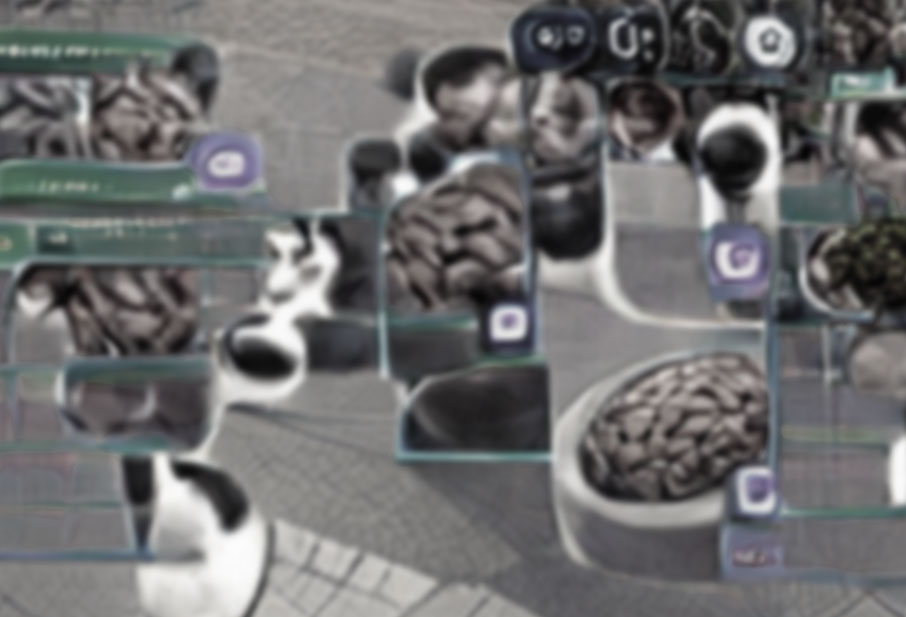 News
News29 June, 2023

I recently consulted ChatGPT regarding effective techniques for structuring text data in WordPress to enhance accessibility for its AI language model. I thought I would share what I learned.
We want Artist Online Presence and Archiving’s (AOPA) Retrospective platform, which is being built on WordPress, to respond to the needs of these new natural-language search tools such as ChatGPT, and the many competing alternatives appearing out there. Their learning starts with information gleaned from the internet. So, we want the content of the online retrospectives we create for artists to be accessible when a user out there asks a question related to their art.
Let’s see how the AOPA’s Retrospective platform stands up…
ChatGPT finds it easier to access different types of data when Custom Post Types are used in a WordPress theme. Custom Post Types are a core function of WordPress. A Custom Post Type is a data object with its own metadata (i.e. custom data fields). The first iterations of AOPA’s Retrospective Platform will use “Artwork”, “Artist” and “Series” custom post types, with more planned for the future. Each of these provides a comprehensive list of custom data fields to describe, for example, artworks, (including: medium, dimensions, duration, style, exhibition history, collections, description and statement). These can be easily parsed by ChatGPT. AOPA is on the right track.
ChatGPT finds it easier to understand different types of data when taxonomies are used in a WordPress theme. Taxonomies are systems of classification and again are a core feature of WordPress. The AOPA Retrospective platform starts with fundamental taxonomies such as “artwork type” (e.g. painting, drawing, performance, installation, etc.). But, any custom taxonomies that are appropriate to the grouping of works in an artist’s oeuvres can be added. For example “themes” shared by certain works, groupings by “chronological periods” or “subject matter”, all of which will help ChatGPT understand and learn from the content.
AOPA Retrospective platform is designed using a robust data model, with the many custom data fields mentioned above. Structured markup allows us to add additional information via a json script (i.e. JSON-LD) or by adding it directly into the html code in our templates (i.e. Microdata). Both help ChatGPT better understand the content and the context of information in an artist’s online retrospective. As well, both options facilitate the accurate retrieval of information.
Senior WordPress developer, Valeriu Tihi, and myself recently met to discuss the structured markup solution that will serve us best, as we design the data base and begin programming the core templates for the Retrospective platform.
We are leaning towards the Microdata solution for several reasons. JSON-LD separates structured data from HTML, which in some cases can be a plus, but not in ours. It increases page load time and limits the level of control we have over how content is rendered on the page. Both visual design and fast-loading pages are important to AOPA.
Microdata integrates directly into the html and provides more control over rendering. It offers a VisualArtwork schema with properties that correspond to those we are using in our Custom Post Types.
Microdata offers AOPA a winning combination: attractive design… and the benefits of an actively maintained and supported standard, that is used to markup a vast amount of content across the web, and in which search engines are invested in understanding and using.
The AOPA Retrospective platform limits the use of any unessential WordPress plugins for many reasons: they can create conflicts, need to be updated, can stop being supported and add lots of extra code. In short, they slow things down and can break websites at any time.
ChatGPT suggests using WordPress plugins designed for structured data, such as Yoast SEO or Schema Pro. But we don’t need them. AOPA will achieve everything that we need these plugins to do directly in our templates, using way less code. The outcome is to keep things as simple and as streamlined as possible, while providing ChatGPT the structured content it needs all the same.
(update: Valeriu made a strong case for using Yoast SEO in our platform, He argued that the functionality it offers is worth the maintenance, and furthermore, it should not add to load times once pages are cached. So we will be using it for the first iteration.)
ChatGPT encourages doing the work of creating a technical reference document that:
Why? ChatGPT won’t read it! It’s for us. Documentation provides a reference for current and future development that ensures consistency. ChatGPT likes consistency and so does APOA.
Finally, ChatGPT also pointed out an important byproduct of structuring content for its searches, which offers AOPA and our clients some powerful possibilities.
Properly structured data from the AOPA Retrospective platform can be made available to other platforms using an API (application programming interface). In the future we could develop a custom API endpoint in WordPress specifically for retrieving artwork data. This endpoint could be designed to accept parameters such as artwork ID or category to fetch specific artwork details.
So, for example, the data from all AOPA online retrospectives could be made available, with permission, to a mobile app that provides information on contemporary artists in Canada, or from around the world. Or we could create a website specifically designed for curators that would present the artworks of AOPA clients according to the criteria they select. In other words, the AOPA online retrospective is only one of many potential manifestations of our artists’ content in the digital sphere. Once the data is entered and structured, the sky’s the limit.
I think we can all agree that AI search engines are an exciting new way to interact with the internet that will, at the very least, complement keyword searches in Google that have become second nature to us. Search engine optimization (SEO) is already built into the creation of all AOPA retrospectives. Our commitment is to ensure your content is relevant into the future. Structuring data for ChatGPT and other ChatAI searches is one of many ways we do this.
I can’t end without sharing an article that I found in researching this post that I found interesting because it cut trough the hype surrounding artificial intelligence.
It is by Gary Smith, an economist and professor of economy who has written several books on AI and data science. In his article “An AI that can write is feeding delusions about how smart artificial intelligence really is” (salon.com 2023), Smith points out: “AI algorithms have an unrivaled ability to spot statistical patterns but have no way of distinguishing meaningful patterns from meaningless coincidences.” To prove his point he tells us about an AI investor program launched in 2017 that was shut down in 2023 because it had a -10% return, 70% lower than an average indexed fund.
In other words, while ChatGPT can “string words together in a convincing way”, it does not understand the meaning of those worlds. “Predicting that the word down is likely to follow the word fell does not require any understanding of what either word means — only a statistical calculation that these words often go together.” According to Smith “Large Language Models (LLMs) like GPT-3 do not use calculators, attempt any kind of logical reasoning, or try to distinguish between fact and falsehood. They are trained to identify likely sequences of words—nothing more.”
It is not magic (well it kind of is, :-). When I asked ChatGPT “Who are Janet Cardiff and George Bures Miller, and what is their art about?” I get a decent five paragraph answer using the information about her found by ChatGPT on the internet. But if one wants to go deeper, where will we look? To her and George Bures Miller’s website.
choose your preferred method of communication